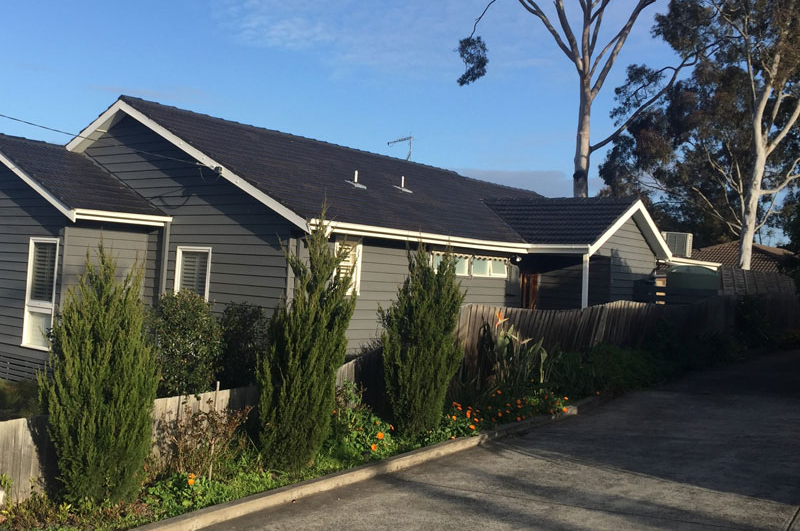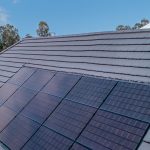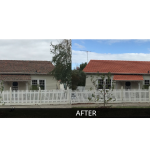
Suitable Roofing Materials According to Your Location’s Climate
08 May 2023Selecting the best roofing materials for your house is more crucial than you may realise. It would help if you considered the environment in which you reside, the maintenance of your roof against the elements, and the protection of your home from any potential natural disasters. Snow and ice may collect on your roof and cause damage in colder areas. In warmer areas, you’ll want to ensure your roof isn’t absorbing and transmitting all the heat inside. Various roofing materials are better suited to different situations for these and other reasons. Select wisely, and you won’t struggle with roof damage or unexpected repair costs.
Why Roofing Material is Important
Temperature, natural components such as snow and rain, and the possibility of hurricanes, tornadoes, and other natural calamities must all be considered. Certain materials are more resistant to extreme heat than others and will reflect sunlight to keep your home cool. Other materials will survive hurricane-force winds and temperature variations throughout the year. Choosing the appropriate shingles for your roof is an important decision.
Climate Issues to Consider
Depending on where you reside, several climatic conditions must be considered when selecting a roofing material. A roofing material option will be perfect if you’re concerned about temperature, storms, or weather patterns. Consider all characteristics of your local climate before deciding on a material. To get started, consider the following climatic characteristics:
• Temperature and weather conditions
• Natural calamities such as floods, storms, forest fires, and tornadoes
• Frequent weather patterns, such as snow, rain, or strong winds
• Sunlight intensity
• Wind speed and direction on average
• Geographical location
• Precipitation totals
Roofing Material Types
Now that you understand why your roofing decision is important, whether repairing your roof or building a new house, let’s look at the various available materials. Several shingle varieties are available today, each with its advantages and disadvantages.
Roofing Shingles
Asphalt shingles have long been a popular residential roofing material, but their popularity may wane due to the rise of metal roofing. However, asphalt shingles are a cost-effective and beautiful option for protecting your property from the weather. Fibreglass asphalt shingles reflect part of the sunshine and are resistant to ripping. Asphalt shingles have two wind uplift ratings, with high-wind shingles being available. They can endure up to 30 years in temperate conditions.
Wood Shakes and Shingles
Cedar, redwood, cypress, and pressure-treated pine wood shingles and shakes are available. They provide an appealing roofing option with a more rustic appearance. Certain woods include natural oils that make them resistant to dampness and insects. They may outlast asphalt shingles by five to 10 years, making them attractive and economically priced. Moreover, wood is a great insulator, and treated wood shingles have a Class A fire rating.
Metal Roofs
Metal roofing has been around for a long time and is quite durable. It has lately gained popularity due to its durability and environmental friendliness. Metal has a Class A fire rating and can last 50-100 years. One significant advantage of metal roofing is that it reflects solar radiation heat, keeping your home cooler. Metal roofing is more expensive than its competitors, but it lasts far longer, making it a great choice.
Roof Tiles of Concrete and Clay
Tile roofs may necessitate additional framework owing to their weight, but they make up for it in beauty and longevity. Clay, concrete, and fibre cement have a lifespan of more than 50 years and are recyclable. Tiles resist fire and insects, making them feasible in various climates. Light-coloured tile also reflects sunlight, which may help you regulate the temperature in your house.
Recent Posts
-
 Monier SOLARtile vs Bolt-On Panels: Integrated Solar Roofing for Melbourne Homes
Monier SOLARtile vs Bolt-On Panels: Integrated Solar Roofing for Melbourne Homes -
 Monier C-LOC™ Concrete Roof Tiles: Superior Gloss Retention, Durability & Long-Lasting Performance
Monier C-LOC™ Concrete Roof Tiles: Superior Gloss Retention, Durability & Long-Lasting Performance -
 Terracotta Tile Roof Restoration: 7 Signs Your Roof Needs Urgent Attention
Terracotta Tile Roof Restoration: 7 Signs Your Roof Needs Urgent Attention -
 Residential Roof Tile Installation: Preparing Your Home & Site for Installation Day
Residential Roof Tile Installation: Preparing Your Home & Site for Installation Day -
 Roof Extensions in Heritage Overlays: Matching Monier Profiles Without Breaching Planning Rules
Roof Extensions in Heritage Overlays: Matching Monier Profiles Without Breaching Planning Rules -
 Are Monier Concrete Roof Tiles the Most Economical Roofing Option? Here Are the Key Reasons
Are Monier Concrete Roof Tiles the Most Economical Roofing Option? Here Are the Key Reasons -
 Roof Tiling Melbourne: Expert Climate-Driven Choices for Long-Lasting Roofs
Roof Tiling Melbourne: Expert Climate-Driven Choices for Long-Lasting Roofs -
 Terracotta Roof Tiles: Monier Classic Styles Backed by Modern Roofing Technology
Terracotta Roof Tiles: Monier Classic Styles Backed by Modern Roofing Technology -
 Roofing Services Melbourne: Don’t Risk DIY – Call the Professionals
Roofing Services Melbourne: Don’t Risk DIY – Call the Professionals -
 Need Melbourne Roof Replacement? Choose Monier Tiles for Long-Lasting Results
Need Melbourne Roof Replacement? Choose Monier Tiles for Long-Lasting Results

